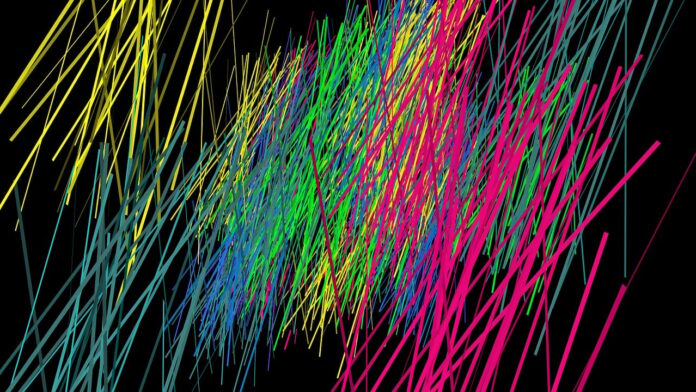HEIC represents a transformative step in the evolution of image formats, offering a potent combination of compression efficiency, advanced features, and versatility. Users across various domains, from photography and multimedia production to web design and cloud storage, can harness the benefits of HEIC by understanding its capabilities, addressing compatibility challenges, and adapting their workflows to this modern image format. As the digital landscape continues to evolve, staying informed about the potential applications and considerations associated with HEIC ensures that users can make strategic and informed choices in their digital endeavors.
1. HEIC Overview: High Efficiency Image Format (HEIC) is a modern image file format designed to provide efficient compression while maintaining high image quality. Developed by the Moving Picture Experts Group (MPEG), HEIC is particularly prevalent in the realm of Apple devices, where it serves as the default image format. This format boasts several advantages, including superior compression capabilities, support for advanced features like transparency and multiple images in a single file, and a reduction in storage space without compromising image quality. As digital media continues to evolve, understanding HEIC becomes essential for users seeking optimal image handling and storage solutions.
2. Superior Compression Efficiency: HEIC distinguishes itself through its superior compression efficiency, offering a significant reduction in file size without compromising image quality. This is particularly beneficial for users dealing with large numbers of high-resolution images, as it allows them to save storage space on their devices and in the cloud. The advanced compression algorithms employed by HEIC make it an ideal choice for those who prioritize efficient storage without sacrificing visual fidelity.
3. Apple’s Default Image Format: HEIC serves as Apple’s default image format, making it the standard choice for capturing and storing photos on devices like iPhones and iPads. This default setting reflects Apple’s commitment to optimizing storage space and enhancing the overall user experience. As a result, users of Apple devices often encounter HEIC files when taking photos, especially in newer models where HEIC has replaced JPEG as the default image format.
4. Support for Advanced Features: HEIC supports advanced features that contribute to its versatility. One notable feature is transparency support, allowing images to have a transparent background. Additionally, HEIC supports the inclusion of multiple images within a single file, making it a suitable choice for creating image galleries or animated sequences. These advanced features open up creative possibilities for users, especially those engaged in graphic design, multimedia production, or other fields that require flexible and feature-rich image formats.
5. Compatibility Challenges: While HEIC offers numerous benefits, it presents challenges in terms of compatibility with certain software and devices. Not all applications and platforms support HEIC by default, leading to potential issues when sharing or opening HEIC files. Although support has been expanding, users may need to convert HEIC files to more universally supported formats like JPEG in some situations to ensure seamless compatibility across various devices and software.
6. Efficient Transfer and Sharing: Due to its superior compression, HEIC facilitates efficient transfer and sharing of images. Smaller file sizes mean faster upload and download times, making it quicker and more convenient to share photos via email, messaging apps, or social media platforms. This efficiency aligns with contemporary trends where users prioritize speed and convenience in digital communication and sharing.
7. Lossy and Lossless Compression Options: HEIC provides both lossy and lossless compression options, allowing users to choose the level of compression based on their preferences and requirements. Lossy compression reduces file size by sacrificing some image data, while lossless compression retains all original image data while still achieving a notable reduction in file size. This flexibility enables users to balance their need for efficient storage with their desire for the highest possible image quality.
8. Transition from JPEG to HEIC: As Apple has adopted HEIC as its default image format, users may encounter a transition period where images are stored in HEIC alongside the more traditional JPEG format. This transition has implications for storage, as HEIC files generally take up less space than their JPEG counterparts. Users navigating this transition need to be aware of compatibility issues and consider their storage preferences when managing and sharing images across different platforms and devices.
9. Tools for HEIC Conversion: To address compatibility challenges, various tools and online converters are available to convert HEIC files to more widely supported formats like JPEG or PNG. These tools enable users to maintain compatibility when sharing images with individuals who may not have native support for HEIC. The availability of conversion tools contributes to a smoother integration of HEIC into diverse digital environments.
10. Evolving Industry Standards: HEIC’s emergence reflects the ongoing evolution of industry standards in digital media. As technology advances and user preferences shift, new file formats like HEIC are developed to meet the demands of modern devices and applications. Staying informed about these changes ensures that users can adapt their workflows and practices to harness the benefits of emerging formats like HEIC while navigating the challenges posed by evolving standards.
11. Image Quality Considerations: When choosing HEIC as the default image format, users should also consider the impact on image quality. While HEIC’s compression is highly efficient, it is essential to evaluate whether any loss in image data is acceptable for a particular use case. Users engaged in professional photography or graphic design may prioritize formats with minimal compression, such as RAW, to preserve the utmost image quality. Striking a balance between compression efficiency and image quality is crucial in optimizing the use of HEIC for diverse applications.
12. HEIC in Multimedia Applications: Beyond static images, HEIC’s capabilities extend to multimedia applications. Its support for sequences of images within a single file, coupled with advanced compression, makes it suitable for creating animations or slideshows. As multimedia content continues to thrive on digital platforms, understanding HEIC’s potential in these applications becomes relevant for content creators and those exploring dynamic visual storytelling.
13. Device-Specific Considerations: Given HEIC’s association with Apple devices, users operating within the Apple ecosystem, including Macs, iPhones, and iPads, experience a seamless integration of HEIC into their workflows. However, users who primarily use non-Apple devices or software may encounter compatibility challenges. Considerations related to cross-platform usage and collaboration are vital in determining the practicality of HEIC in one’s digital environment.
14. HEIC and Cloud Storage: The efficient compression of HEIC has notable implications for cloud storage users. As many cloud services charge based on storage usage, adopting HEIC can lead to cost savings by reducing the amount of space required for image storage. Cloud storage users should explore the compatibility of their chosen service with HEIC and assess the potential benefits in terms of both storage efficiency and cost-effectiveness.
15. Software Updates and HEIC Support: The landscape of software support for HEIC is dynamic, with updates and improvements continually being made. Users should ensure that their software applications, including image viewers, editors, and operating systems, are regularly updated to benefit from the latest compatibility enhancements and features related to HEIC. Staying abreast of these updates is crucial for a seamless experience with HEIC files.
16. Potential for Integration in Web Design: Considering the lightweight nature of HEIC files, web designers may find value in incorporating HEIC images into their projects. Faster loading times and reduced bandwidth usage can contribute to an enhanced user experience on websites. However, designers need to consider the broad compatibility of HEIC across various web browsers and ensure fallback options for users on platforms that may not fully support HEIC.
17. Security Implications: As with any file format, users should be mindful of potential security implications associated with HEIC files. While HEIC itself does not inherently introduce security risks, users should exercise caution when downloading HEIC files from untrusted sources. As HEIC becomes more prevalent, awareness of potential security concerns and best practices for file handling is essential for maintaining a secure digital environment.
18. Future of Image Formats: HEIC’s introduction signals a shift in the landscape of image formats, reflecting the industry’s ongoing quest for more efficient and versatile solutions. Users should anticipate further developments in image compression and file formats, considering how emerging technologies might impact their workflows. Staying informed about advancements in image formats ensures that users are well-equipped to adapt to the changing landscape of digital media.
19. Mobile Photography and HEIC: Given that HEIC is the default image format on many modern smartphones, particularly iPhones, mobile photographers should be well-versed in the advantages and considerations associated with HEIC. Understanding how HEIC impacts storage, sharing, and editing workflows on mobile devices enhances the overall mobile photography experience. Mobile photography enthusiasts can leverage the efficiency of HEIC to optimize storage without compromising on image quality.
20. Educational Resources and HEIC: To navigate the nuances of HEIC effectively, users can benefit from educational resources provided by technology companies, online forums, and professional communities. Learning about best practices, troubleshooting common issues, and staying informed about updates in HEIC support can empower users to make informed decisions about incorporating HEIC into their digital workflows. Engaging with educational content ensures a smoother integration of HEIC into diverse contexts.
In conclusion, HEIC represents a transformative step in the evolution of image formats, offering a potent combination of compression efficiency, advanced features, and versatility. Users across various domains, from photography and multimedia production to web design and cloud storage, can harness the benefits of HEIC by understanding its capabilities, addressing compatibility challenges, and adapting their workflows to this modern image format. As the digital landscape continues to evolve, staying informed about the potential applications and considerations associated with HEIC ensures that users can make strategic and informed choices in their digital endeavors.














